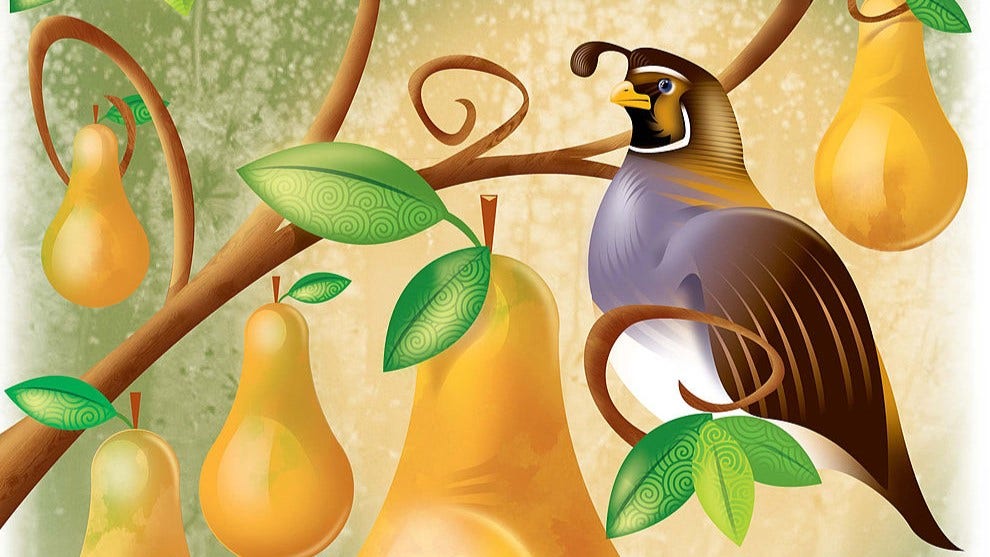The traditional Christmas carol, “The Twelve Days of Christmas,” serves not only as a festive melody but also as a unique barometer for annual inflation. PNC Bank, along with other financial institutions, meticulously tracks the cost of each gift mentioned in the song, from the humble partridge in a pear tree to the extravagant twelve drummers drumming, providing a whimsical yet insightful look at economic trends. This year, PNC’s Christmas Price Index reveals a 5.4% increase compared to 2023, bringing the total cost of all the gifts to just under $50,000. Interestingly, the cost isn’t uniform across the United States. Swyft Filings, a Texas-based company, highlighted state-specific variations influenced by taxes, regulations, and other local factors. Their analysis in 2023 revealed California, Hawaii, and Washington as the most expensive states for procuring the twelve gifts, while Arkansas, Mississippi, and Alabama offered the most budget-friendly options.
Delving into the individual gifts, the escalating cost of hired musicians is evident. Wage inflation significantly impacted the price of both the twelve drummers drumming and eleven pipers piping, resulting in a 15.6% increase for both, reaching $4,017 and $3,715 respectively. Similarly, the cost of nine ladies dancing, likely representing a professional dance troupe, experienced a 3% rise, reaching $8,557. The most significant jump, however, was observed in the price of ten lords-a-leaping, a symbolic representation of nobility or perhaps political figures, which saw a 7.2% increase, landing at a staggering $15,579.65. This makes it the most expensive item on the gift list for 2024.
The cost of livestock and fowl presented a mixed picture. Eight maids-a-milking remained steady at $58, reflecting stable labor costs, while seven swans-a-swimming held firm at over $13,000. Six geese-a-laying experienced a 15% increase to $900, likely influenced by agricultural cost fluctuations. Three French hens, known for their culinary prestige, saw a modest 5% increase to $347, influenced by market demand and breed rarity. Two turtledoves, symbolic of love and friendship, maintained their price at $750, despite their status as a threatened species. Lastly, the quintessential partridge in a pear tree saw a slight increase in price, with the tree itself costing more, while the bird’s price remained stable, leading to a combined total of $160.
The pricing of the remaining gifts reflects market trends in precious metals and avian costs. Five gold rings were estimated at $1,245, with the actual value dependent on factors like carat, size, and craftsmanship. Four calling birds, alternatively interpreted as “colly birds” or blackbirds, remained steady at just under $600. This consistency suggests a relatively stable market for these birds. The overall trend indicates that the prices are subject to various market forces and economic influences, impacting the total cost of the twelve days of Christmas gifts.
PNC’s four-decade-long tracking of these costs has revealed a significant 133% overall increase. This underscores the long-term impact of inflation on the economy. Factors such as minimum wage increases have noticeably influenced the prices of services, particularly those involving hired performers like pipers and drummers. The rise of online commerce has also played a role, with online purchases often exceeding brick-and-mortar prices due to added shipping costs. The accessibility of information and potential availability of these items due to the internet has also influenced the calculation and feasibility of acquiring these items.
PNC’s Amanda Agati, chief investment officer of the PNC Asset Management Group, attributes the continuing price increases to the lingering effects of pandemic-induced inflation. Despite years of steep price hikes, inflation persists, impacting the cost of goods and services across the spectrum, as reflected in the PNC Christmas Price Index. This whimsical index offers a tangible illustration of broader economic realities, highlighting the continuous evolution of market dynamics and their impact on consumer spending, even during the festive season. If one were to purchase the entire ensemble of 364 gifts, the total cost in 2024 would be a staggering $209,272, a 3.6% increase from the previous year. This underscores the cumulative effect of individual price increases across the twelve days.

